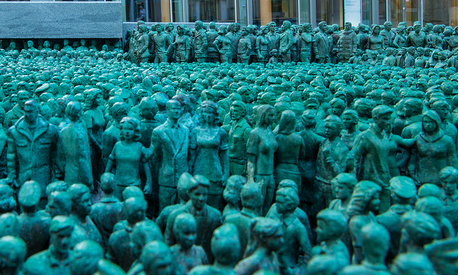While growing up in the Dominican Republic, Ana Garcia-Ashley lived on a dirt road that always had plenty of traffic, making it too dangerous a place for neighborhood children to play. One morning, her grandmother got fed up with the situation and decided to take action. She went door to door, rounding up other concerned community members. Together they created a human chain to block the road, stopping traffic in hopes of having their concerns heard. Garcia-Ashley recalls standing in the road holding the hand of her grandmother, who looked down at her and said, “This is what it means to be a Catholic.”
That was Garcia-Ashley’s first taste of community organizing, and it was a success. She learned that when people with a common cause work together, they can achieve great things.
Garcia-Ashley continued her activism after moving to the United States, and upon graduating from the University of Colorado she became a full-time community organizer for the Archdiocese of Denver. Eventually, her work led her to her current role as executive director of Gamaliel, a national community organizing network.
Through it all she has remained a fearless advocate who will take risks to help those in need, just like her grandmother taught her. “That’s how I have lived my life,” she says. “You have to put your values and your Catholic beliefs on the front line to get something done.”
What exactly is community organizing, and how does it work?
One of the stories that got me to really understand the role of community organizers, including church leaders, came when I was working in the Archdiocese of Denver. I was assigned to work in an area called Westwood, which is a low-income neighborhood of mostly Mexican Americans and African Americans in southwest Denver. Continue reading
Sources
- U.S. Catholic
- Image: Popular Resistance
